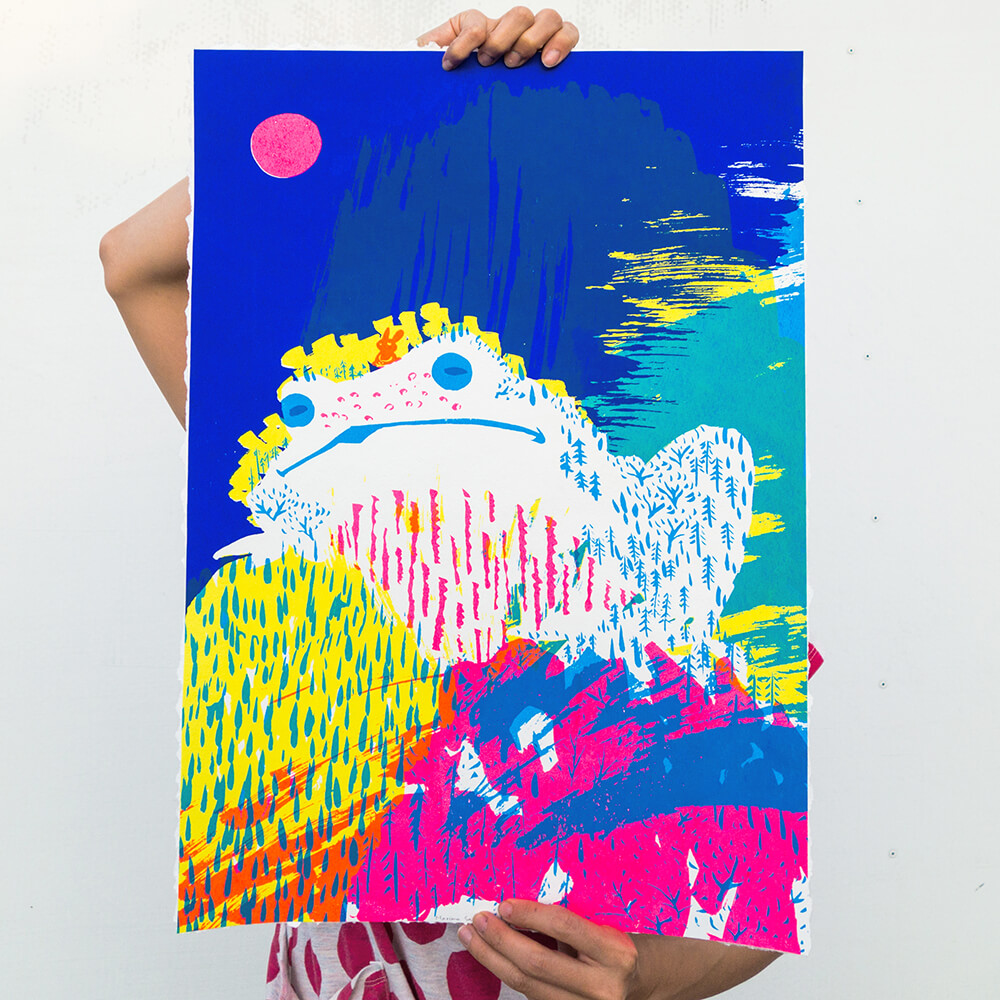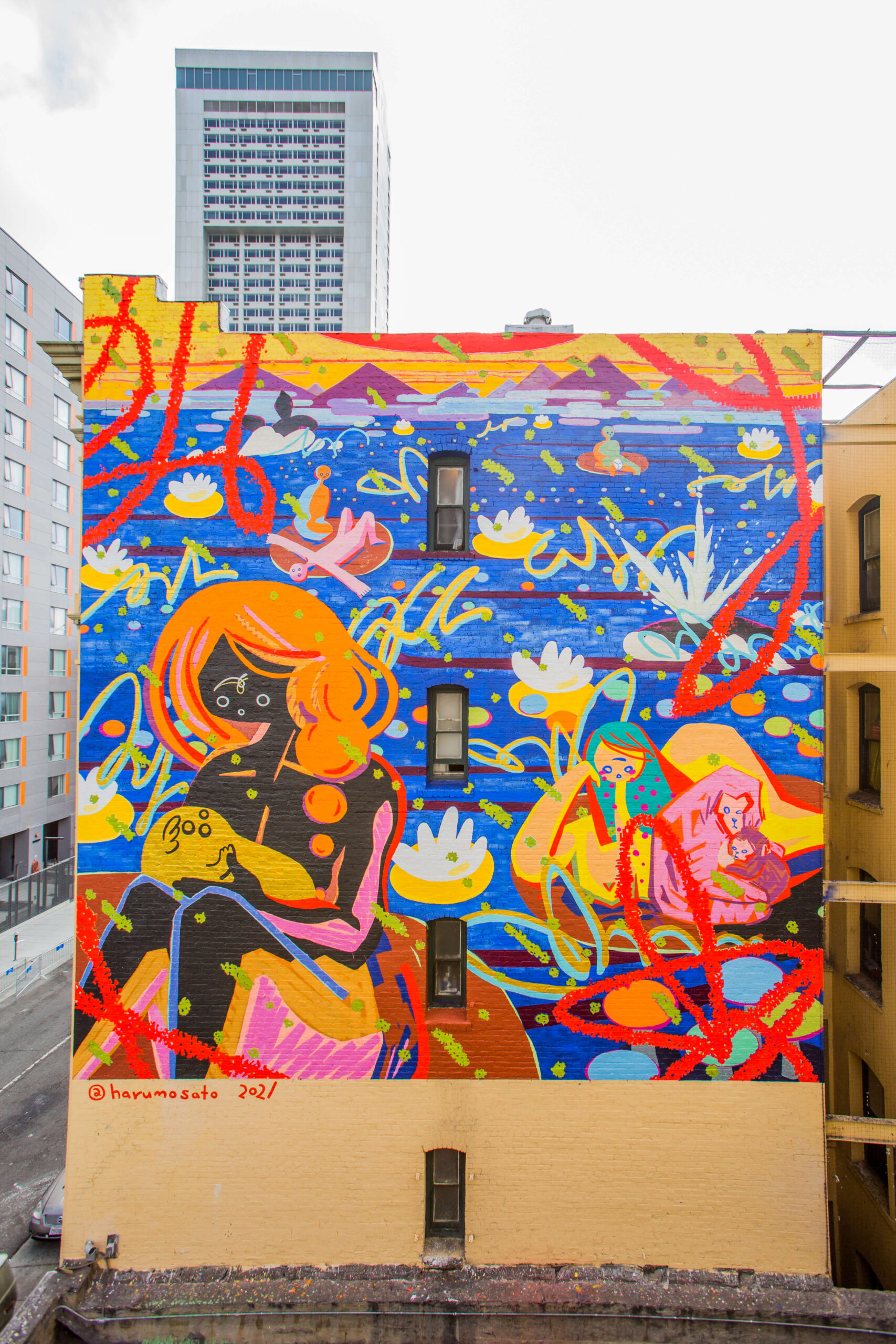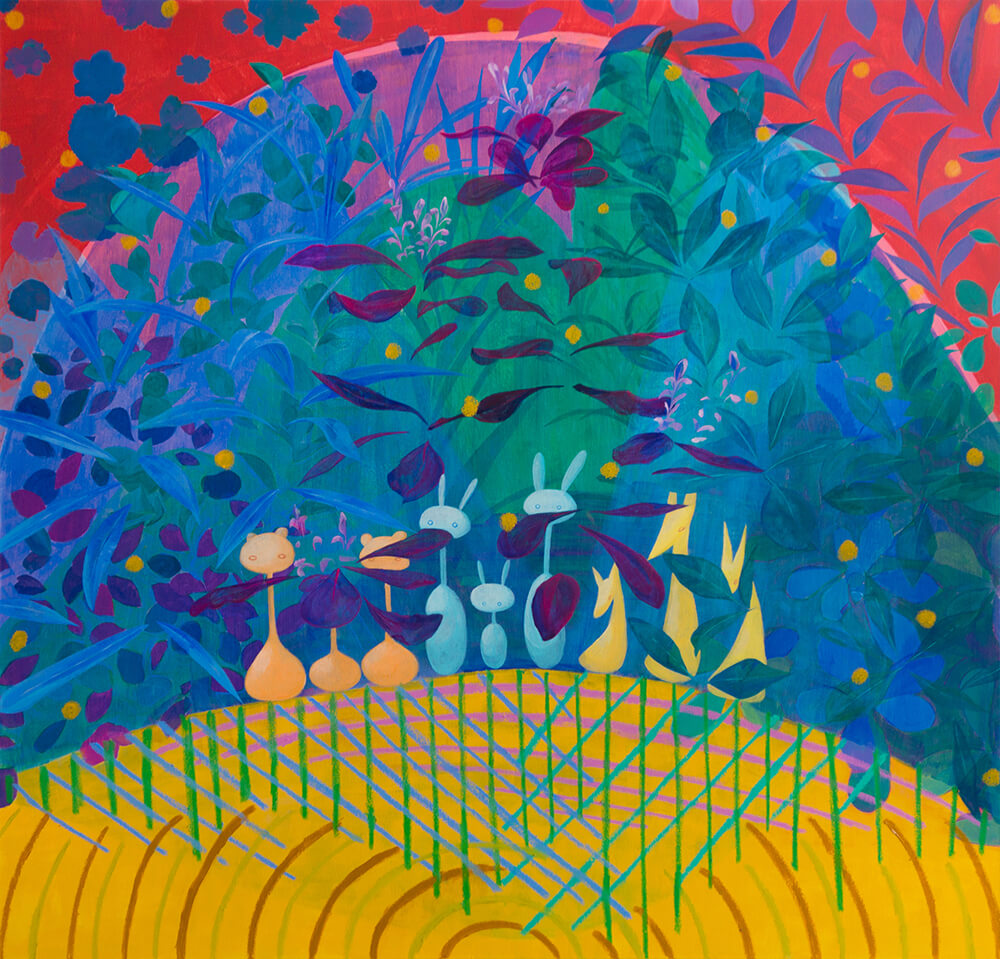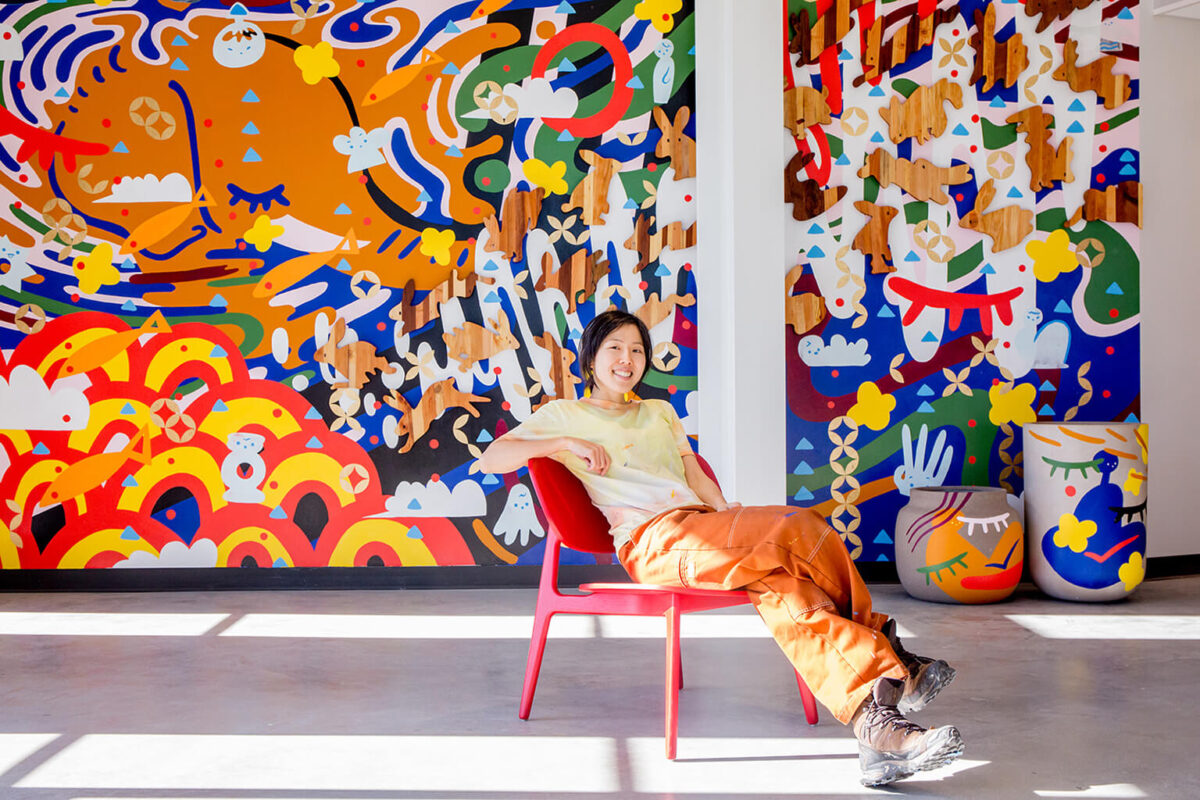Words by Jennifer Jory
Perched high in an aerial lift, Harumo Sato paints bold designs and geometric shapes that weave a colorful story across a Google building in Sunnyvale. “I always wanted to be a ninja when I was younger,” admits the artist. “Climbing up to paint feels magical because at one point, I had a disabled body.” Through personal hardship and perseverance, Harumo’s murals, paintings and sculptures now grace buildings and collections across the Bay Area and U.S., revealing her salient message about culture, history and our current moment.
The daughter of two ancient civilization history teachers, Harumo grew up in Japan and spent her youth traveling to Greece, Egypt and Europe, where she visited many prehistoric sites. “There was no time to enjoy pizza in Italy, only to visit ruins in places like Palermo,” recalls Harumo. After extensive global travel with her parents, time spent living in France and month-long visits to Tunisia and Morocco, she began to notice similarities in early art from different civilizations. Many cultures seemed to have animistic images in common. “Everything has a soul,” she emphasizes. Harumo’s organic, dream-like images are as playful as they are steeped with meaning. Through her art, she gives voice to her historical observations—and lessons learned by overcoming major life challenges.

Cover Photo: Lanny Nguyen / Painting Photo: Harumo Sato
Harumo’s trials began while working at an advertising agency in Tokyo. One day, the muscles in her right arm suddenly and inexplicably stopped functioning, leaving her without the use of her dominant hand. Doctors couldn’t find a cure. Unable to work, she returned to her hometown outside of Tokyo in Tochigi Prefecture for a six-month leave. Several months later, a 9.0 earthquake hit Fukushima, the prefecture next to her own. It leveled centuries-old temples, caused a devastating tsunami and triggered a nuclear plant meltdown. Although she knew she was fortunate to be alive, Harumo says she felt hopeless without having the use of her arm.
A silver lining emerged when her former art teacher, Shusei, offered Harumo work as an apprentice and the opportunity to rehabilitate her arm through drawing. Having weathered a similar condition as the result of a stroke, Shusei took Harumo under his wing and coached her back to a fully functioning body. “He said there is always a way to rewire the brain so you can use your arm again,” she recounts. “I started to move a little bit and I thought, why not do what I love and study art in the States? As the eldest daughter, I had so much pressure to be successful. In Japan, being an artist is not a real option I could choose.” Harumo landed at the University at Buffalo in New York where she earned a bachelor’s degree in fine arts. While there, she secured a scholarship to study at New York’s Parsons School of Design for a summer.

Photo: Courtesy of Lanny Nguyen
Even in the face of adversity, Harumo says she strives to appreciate each day and paints with joyful hues. “Color is a symbol of life and celebration,” she emphasizes. “After experiencing disaster, I learned to appreciate the moment I am in.” Now as a wife and the mother of three-year-old Gio, being present takes on new meaning as she finds inspiration for her work in her son and his friends.
Today, you can find Harumo at the Cubberley Artist Studio Program in Palo Alto where she is working full-time on multiple commissioned pieces. Currently, she’s planning an upcoming mural in Mountain View and creating a bronze sculpture for the NFTA Metro in New York. Her mural and art installation commissions span from government agencies in Washington, D.C., to Meta offices, the University of Buffalo and beyond. Harumo also produces hand-pulled screen prints and shows her prolific collection of paintings at exhibitions across the country.
By creating art for public spaces, she aims to bring awareness to the history of a place and ignite viewers’ curiosity. “Public art is a way to commemorate where we are and what we are doing to recreate narratives,” Harumo asserts. “It tells newcomers to share that narrative.”

Photo: Courtesy of Harumo Sato
In San Francisco’s Tenderloin neighborhood, her colorful mural titled We Used To Be Held brings life to a gray building and offers a hopeful message to a struggling population. “I was caring for my seven-month-old baby when I painted my first mural in the Tenderloin,” says Harumo. “I reflected on the fact that people who are on the street were babies who were held by someone who sustained their life before something unfortunate happened.”
As a multicultural artist, Harumo strives to bring people together by highlighting common ground. She cites the famous East-West trade route of antiquity as one example of how cultures have come together throughout history. “Observing the patterns of the design of import and export on the Silk Road helps me believe in a greater humanity that can unite,” she reflects. “I see patterns from Egypt that evolved as they traveled the Silk Road and Japanese flower patterns in Italian art. Culture is not one entity. We are weaving together, all of the time.”


